The article discusses the Top 10 freedom fighters of India involved in the fight for Indian independence. There is a history of intense rebellions, battles, and movements that were carried out by thousands of zealous Indian independence warriors
And top freedom fighters of India that lies behind the celebration of independence that took place on August 15, 1947.
This history is extremely violent and chaotic. Every one of India's freedom fighters fought, suffered, and, in many cases, devoted their lives to free India from British rule.
A sizable number of rebels and activists from a diverse range of family backgrounds banded together and set out on a mission to overturn the authority of foreign imperial powers and the colonial system they had established in India.
A good many of us may have heard of a few of them, but there are a lot of important heroes whose work was just lost due to little or no recognition.
Who Are Freedom Fighters?
The citizen who voluntarily sacrifices their lives to achieve independence for their nation are known as freedom fighters. Every nation has its share of those who struggle for civil liberties.
They are seen as role models for patriotism and love of one's nation by the general public. They are the standard by which all other patriotic individuals are measured.
The independence movement in India was fought against the British. It is marked by the involvement of a staggering number of individuals from the entire nation.
Thousands of men and women battled side by side against the British Raj. They fought in regions ranging from Kashmir to Kanyakumari, and Assam to Gujarat.
While many brave individuals made the ultimate sacrifice by giving their lives to defend the honor of the country, others were hurt during the conflict and were afterward sentenced to jail.
It is impossible to adequately convey the amount of suffering, adversity, and opposition that they have encountered. The Indian Independence Movement consisted of attempts made by people.
This is a list of notable people who fought against colonial control on the Indian subcontinent, or who are regarded to have campaigned against the colonial rule on the Indian subcontinent.
Importance Of Freedom Fighters In India
It was the culmination of several movements and fights that were widespread during the whole period of British administration, including the historic insurrection that took place in 1857.
The successful attainment of this independence was due to the efforts of a great number of revolutionary freedom fighters. Even though they adhered to a spectrum of political viewpoints,
Ranging from moderate to extreme, their contributions to India's fight for independence have been ingrained in the consciousness of every Indian.
A large number of revolutionaries and activists from a wide variety of family backgrounds banded together and set out on a mission to put an end to the rule of foreign imperialists and the Colonialism that they imposed on India.
In recognition of their hard work and unwavering commitment, we have compiled a list of the top 10 freedom warriors from India; without them, none of us would be able to take a breath in an independent India.
This blog pays tribute to the Indian nationalists and freedom warriors who gave their lives to establish India's independence.
Also Read: Sardar Vallabhbhai Patel, Jawaharlal Nehru & 3. Mahatma Gandhi
Top 10 Freedom Fighters Of India (2022)
1. Sardar Vallabhbhai Patel
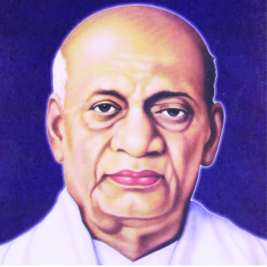
Between the years 1947 and 1950, Sardar Vallabhbhai Patel held the position of India's first Deputy Prime Minister.
He was a Barrister and a senior leader in the Indian National Congress. A pivotal figure in the country's fight for independence
And was instrumental in guiding the country's incorporation into a single, sovereign nation.
Within the Indian National Congress, he was known as a member of the more traditionalist faction.
which means "chief" in Hindi, Urdu, and Persian. During the process of political unification in India as well as the Indo-Pakistani War that took place in 1947, he served as the Home Minister.
On October 31st, 1875, Sardar Vallabhbhai Patel was born in the city of Nadia. On December 15, 1950, in the city of Mumbai, Sardar Vallabhbhai Patel passed away. Nadiad is his place of birth.
Jhaveri Patel was Sardar Vallabhbhai Patel's wife. Vallabhbhai Jhaverbhai Patel was born in Nadiad. He was one of six children that Jhaverbhai Patel and Ladba had.
He was a follower of Vaishnavism, and he was a member of the pushtimarg of Mahaprabhu Vallabhacharya. He also received the Diksha from a descendant of Vallabhacharya.
It was the unwavering dedication to national unity in the newly independent country. He is also known as the "patron saint of India's government officials" since he built the present “All India Services system”.
This is one of the reasons why he is venerated in India. He traveled to England at the age of 36 and enrolled at the Middle Temple Inn in London.
He began his legal studies there. Even though Patel had no prior experience with higher education, he was able to complete a course that was supposed to take 36 months in only 30 months.
Features
2. Jawaharlal Nehru
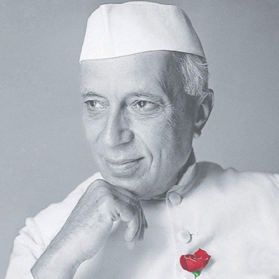
During the 1930s and 1940s, Nehru was name Top 10 freedom fighters is a pivotal figure in the leadership of the nationalist movement in India.
After India gained its independence in 1947, he became the country's prime minister and remained in that position for 17 years.
During the 1950s, Nehru championed parliamentary democracy, secularism, as well as science and technology,
Which had a significant impact on India's trajectory toward becoming a modern country.
In the realm of international politics, he kept India apart from both of the opposing camps throughout the Cold War. Jawaharlal Nehru was born on November 14, 1889 in Prayagraj.
The date and place of death of Jawaharlal Nehru were May 27, 1964. The Spouse of Jawaharlal Nehru was Kamala Nehru. Motilal Nehru was his father.
In England, Jawaharlal Nehru received his education. He attended Harrow School and Trinity College in Cambridge. He also received his legal education at the Inner Temple.
After completing his education to become a lawyer, he went back to India, enrolled in the Allahabad High Court, and gradually started to take an interest in national politics. This passion finally blossomed into a full-time vocation for him.
Features
3. Mahatma Gandhi
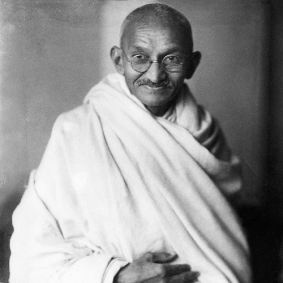
The philosophy of Satyagraha, also known as the opposition against oppression by mass peaceful civil disobedience, was developed and put into practice by Mahatma Gandhi.
Gandhi's supreme application of the principles of nonviolent civil disobedience, which played a key role in India's independence from foreign rule.
It came into existence while he was leading nationwide campaigns to alleviate poverty, expand women's rights,
Build religious and ethnic harmony, and eliminate the injustices of the caste system.
Because of his acts, he was often imprisoned, sometimes for years at a time. Despite this, he was successful in achieving his goal in 1947, when India won its independence from Britain.
As a result of his greatness, people now refer to him as Mahatma, which literally translates to "great soul." Gandhi has been cited as a source of motivation by several world civil rights leaders,
Including Martin Luther King Jr., Nelson Mandela, and others, in their efforts to secure equal rights for the people of their own countries. The date of birth of Mahatma Gandhi was October 2nd, 1869 and he was born in Porbandar.
On January 30, 1948, in New Delhi, he was murdered. The spouse of Mahatma Gandhi was Porbandar Kasturba Gandhi. Putlibai gave birth to her final child,
Mohandas, in a dark room on the ground floor of the Gandhi family mansion in Porbandar city on October 2, 1869. The chamber did not have any windows.
When Gandhi was a youngster, his sister Raliat used to say that he was "restless as mercury," always either playing or wandering about the house.
Gandhi, also known by his popular nickname Bapu, was the person responsible for introducing the concept of non-violence to India. At the age of 22, Gandhi was admitted to the bar in June of 1891,
Having received his legal education at the Inner Temple in London. After two difficult years in India, during which he was unable to establish a fruitful legal career,
He left for South Africa in 1893 to take on the role of legal counsel for an Indian businessman involved in a legal dispute. After that, he settled down in South Africa and remained there for the next 21 years.
It was in this region that Gandhi established his family and pioneered the use of nonviolent resistance as a tactic in the fight for civil rights. In 1915, at the age of 45,
He went to India and immediately began organizing peasants, farmers, and urban laborers to protest against exorbitant land taxes and discrimination. His movement was known as the Indian National Congress.
Features
4. Lal Bahadur Shastri
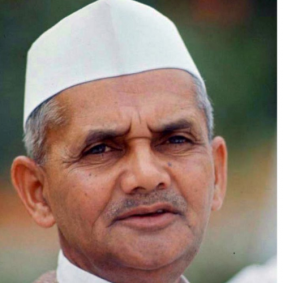
Lal Bahadur Shastri was India's second Prime Minister and a 10 freedom fighters names in the Indian National Congress.
He was also an important player in the struggle for Indian independence and played a pivotal role in that campaign. In 1964,
After the unexpected passing of Pandit Jawaharlal Nehru, he took over as Prime Minister of India.
He is most well-known for having successfully led India through the Indo-Pakistan War in 1965, despite having just recently assumed the position of prime minister.
He concluded that India needed a method of self-sufficiency and independence, and he proposed the motto "Jai Jawan, Jai Kisan," which is the reason he is known even to this day.
The date of birth of Lal Bahadur Shastri was October 2, 1904, and he was born in Mughalsarai. Lal Bahadur Shastri Died on 11 January 1966, in Tashkent, Uzbekistan. Lal Bahadur Shastri was married to Lalita Shastri.
On October 2, 1904, in the city of Mughalsarai, Shastri was born to Sharada Prasad Srivastava and Ramdulari Devi. Famously referred to as the Man of Peace,
He received his bachelor's degree with honors from Kashi Vidyapeeth, which was a national institution of higher education that Gandhi had founded.
Features
5. Subhash Chandra Bose
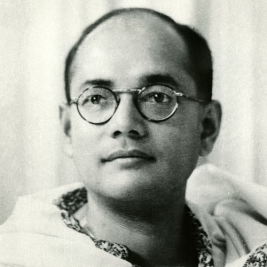
Netaji, the Indian Nationalist Subhas Chandra Bose is remembered by a great number of his countrymen for the profound sense of patriotism
He displayed in the service of India. It is generally agreed that Subhas Chandra Bose was the most influential liberation fighter of all time.
He had outstanding leadership abilities and was a compelling orator. He was born on 23rd of January, 1897 is listed as the birth date.
Bose passed away on August 18, 1945,
As a result of third-degree burns that he received in an aircraft accident that occurred in Taiwan. He came from a wealthy family and was born in the city of Cuttack, which is located in the state of Bengal.
Janakinath Bose served as the father, while Prabhavati Devi was the mother (mother) Emily Schenkl is the spouse. Netaji was a nickname given to Subhas Chandra Bose, who was famous for his participation in the independence struggle in India.
His formal education took place in Calcutta, where he earned a degree in philosophy. Subhas Chandra Bose was given a position in the Indian Civil Services (ICS),
But he turned it down because he did not want to work for the British government. He declined to take up his position.
Features
6. Lala Lajpat Rai
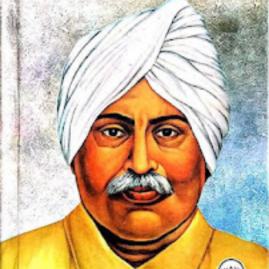
Lala Lajpat Rai made a significant contribution to the nation's victory in the struggle for freedom.
He was instrumental in the founding of a few schools around the nation. In addition, he was the driving force behind the establishment of the Punjab National Bank.
In the year 1897, he established the Hindu Orphan Relief Movement to prevent Christian missionaries from obtaining custody of orphaned Hindu children.
He was struck by a baton while opposing the entrance of the Simon Commission
And as a result, he passed away in the police. The date of birth of Lala Lajpat Rai is November 7, 1858, best freedom fighters of India and the place of birth is Dhudike District, Punjab, India. Lala Lajpat Rai died on 20 May 1932, Kolkata. Lala Lajpat Rai's wife was Radha Devi Aggarwal.
Rai was the son of an Urdu and Persian government school teacher named Munshi Radha Krishna Aggarwal and his wife Gulab Devi Aggarwal. He was born on January 28, 1865, in the village of Dhudike,
Which is located in the Moga district of Punjab Province. Rai's family was a member of the Aggarwal Punjabi Hindu caste. St. Paul's Cathedral Mission College and Presidency University were the institutions attended for education by him.
Features
7. Bhagat Singh
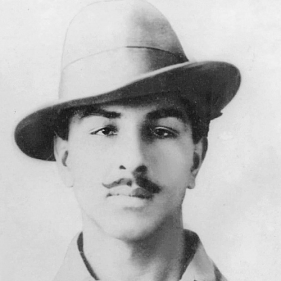
Bhagat Singh was born on 28 September 1907, in Banga, Pakistan. The Date of death of Bhagat Singh was March 23, 1931.
The location of the death of Bhagat Singh was Lahore Central Jail, Lahore, Pakistan. When Gurdev Kaur wed Bhagat Singh in 1961,
He was the second of seven children that Vidyavati and her husband Kishan Singh Sandhu had together.
There were four boys and three girls among their brood. Shaheed Bhagat Singh was one of his most well-known names.
Bhagat Singh had his education in Lahore, first at the Dayanand Anglo Vedic High School, which was run by Arya Samaj (a reform sect of contemporary Hinduism), and subsequently at the National College.
Both of these institutions are situated in the same city. At the age of 23, Bhagat Singh was put to death by hanging in March 1931 after being found guilty of the murders of John Saunders and Channan Singh.
After his passing, he was elevated to the status of a folk hero. In reference to Bhagat Singh, Jawaharlal Nehru stated the following about him: "Bhagat Singh did not become popular because of his act of terrorism
But rather because he appeared to vindicate, for the time, the honor of Lala Lajpat Rai, and through him of the country." He became a symbol; the deed was forgotten,
But the symbol stayed, and within a few months, the name of this man resounded throughout every town and hamlet in Punjab and, to a lesser degree, across the remainder of northern India.
In Pakistan, the plaza in Lahore that was formerly known as Shadman Chowk and where Bhagat Singh was executed has been renamed Bhagat Singh Chowk in response to a long-standing demand
By activists affiliated with the Bhagat Singh Memorial Foundation of Pakistan. A successful challenge was brought against this alteration in a Pakistani court.
Features
8. Rani Lakshmi Bai
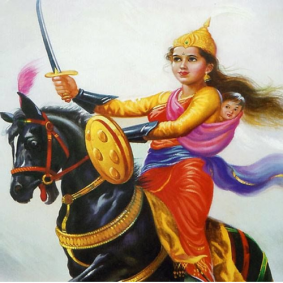
During the War of Independence in 1857, she was one of the most ferocious participants Its best in 5 Indian freedom fighters
She motivated a great number of women throughout India to fight for the independence of India.
In the year 1858, while her palace was being attacked by British forces, she defended it together with her newborn infant.
Rani Lakshmi Bai was Born on 19 November 1828 in Varanasi. She was born in the holy city of Varanasi.
On November 19, 1828, Rani Lakshmibai was born as Manikarnika Tambe into a Marathi Karhade Brahmin household to Moropant Tambe (Father) and Bhagirathi Sapre.
Her birth name was later changed to Rani Lakshmibai When Lakshmibai was only four years old, her mother passed away unexpectedly. She was known as Manu.
She received her education at home and was more self-reliant than other children her age when she was a youngster. Her education encompassed the disciplines of shooting, equestrian, and fencing.
She died on 18 June 1858, Gwalior fighting Britishers.
Features
9. Bal Gangadhar Tilak
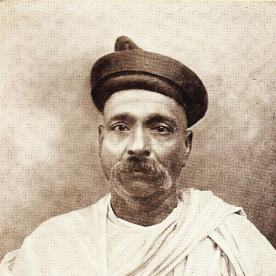
Tilak was the one who initiated the Swadeshi movement in India. He co-founded the Bombay Swadeshi Stores with Jamshedji Tata.
Keshav Gangadhar Tilak was born on July 23, 1856, in Ratnagiri, the capital city of the Ratnagiri district in the state of Maharashtra
(which was known as The British government established the Simon Commission Bombay Presidency at the time),
Into a family that belonged to the Chitpavan Brahmin caste of the Marathi Hindu religion.
Bal Gangadhar Tilak's was married to Chikhali Satyabhamabai Tilak. Chikhali was the name of his ancestral village. Gangadhar Tilak’s father was a Sanskrit scholar and a school teacher.
His father passed away when Tilak was sixteen years old. In 1877, he graduated from Deccan College in Pune with a Bachelor's degree in Mathematics, with first-class standing.
He dropped out of the Master of Arts program in the middle of it to enroll in the Juris Doctor program instead, and he graduated from Government Law College with a Juris Doctor degree in 1879. Bal Gangadhar Tilak Died on 1 August 1920, Mumbai.
Features
10. Mangal Pandey
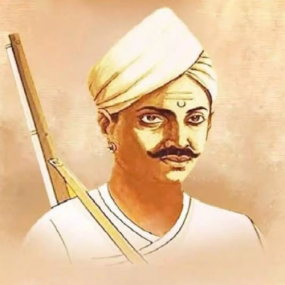
Mangal Pandey was an Indian soldier who was instrumental in the chain of events that led up to the beginning of the Indian uprising in 1857.
He served as a sepoy, which is the British term for an infantryman, in the 34th
Bengal Native Infantry (BNI) regiment of the British East India Company.
In 1984, a commemorative postage stamp with his image was released by the government of India.
His life and the events that transpired throughout it have also been dramatized in several other films.
The Date of birth of Mangal Pandey was July 19, 1827, Nagwa. Mangal Pandey's parents were named Divakar and Abhairani Pandey. He was named after his grandfather.
The name Mangal Pandey is synonymous with the battle for Indian freedom. Pandey pioneered the Sepoy mutiny and led an important role in the Independence struggle in the year 1857.
He paced in front of the regiment guard room with a loaded musket to kill the first Britisher he sets his eye on with other Indian Soldiers. He was later arrested and charged with mutiny by Britishers.
The Date and place of death of Mangal Pandey was April 8th, 1857, Barrackpore. He was hanged till death.
Features
Conclusion
The article discusses the top 10 freedom fighters of India involved in the fight for Indian independence. It was due to the freedom fighters that India today is a sovereign nation.
The British government and Dutch people caused a significant amount of hardship for our Indian men and women. Our freedom fighters fought unitedly to get Independence. It is their labor that we Indians live freely today.
The freedom warriors gave up everything even their families that most people couldn't even fathom giving up. It is impossible to adequately convey the amount of anguish, suffering, and hostility that they have faced and overcome.
It is the fruit of all the effort they put in and the sacrifices they made for others, the generation today and coming will live in forever debts.
frequently asked question
Q1. Who is the youngest freedom fighter in India?
Baji Rout was born in 1926 in the hamlet of Nilakanthapur, which is located in the district of Dhenkanal in Odisha. He was just twelve years old when he was executed. Baji Rout holds the record for being the youngest Indian independence fighter and martyr.
He participated in the Prajamandal Andolan as a part of the organization's youth section. At the age of 12, he confronted the bullets of British forces without fear, becoming an example for future generations.
Q2. Who was the strongest freedom fighter?
The most powerful liberation warrior was Sardar Vallabhbhai Patel. As one of the most important and tenacious Indian freedom fighters, he made a significant contribution to the war for Indian independence and was responsible for a great deal of its success.
Sardar Vallabhbhai Patel was responsible for organizing peasants in the areas of Kheda, Borsad, and Bardoli. He was given the position of 49th President of the Indian National Congress.
He even helped in the integration of 565 princely states in India. He was called the builder and consolidator of new India. Some of the princely states which were integrated by him were; Junagadh, Hyderabad, Bhopal, Kashmir, and Travancore.
Q3. What are 10 names of female freedom fighters?
It is impossible to ignore the role played by Indian women in the fight for the country's independence. There were a significant number of brave women who spoke out against the reign of the British.
Indian women helped in achieving Independence by marching down the streets. They never fell short to host lectures and protests, and led processions. Here is a list of 10 female freedom fighters of India;
- Rani Lakshmi Bai of Jhansi
- Aruna Asaf Ali
- Sarojini Naidu
- Usha Mehta
- Madam Bhikaji Cama
- Kasturba Gandhi
- Begum Hazrat Mahal
- Kamala Nehru
- Annie Besant
- Vijaya Lakshmi Pandit
Q4. Who are the last freedom fighters of India?
Rajagopalachari was the Last freedom fighter of India. He was the leader of the Indian National Congress. As India transitioned from a monarchy to a republic in 1950, Rajagopalachari served as India's last Governor-General.
In addition to this, he was the first person to assume the position of governor-general who was born in India; all of the people who held the position before him were British nationals.
Here are my best picks:
Also Read: Check out my reviews of the best image editing software, the top choices for video editing software, and my full guide to start a blog for beginners.


